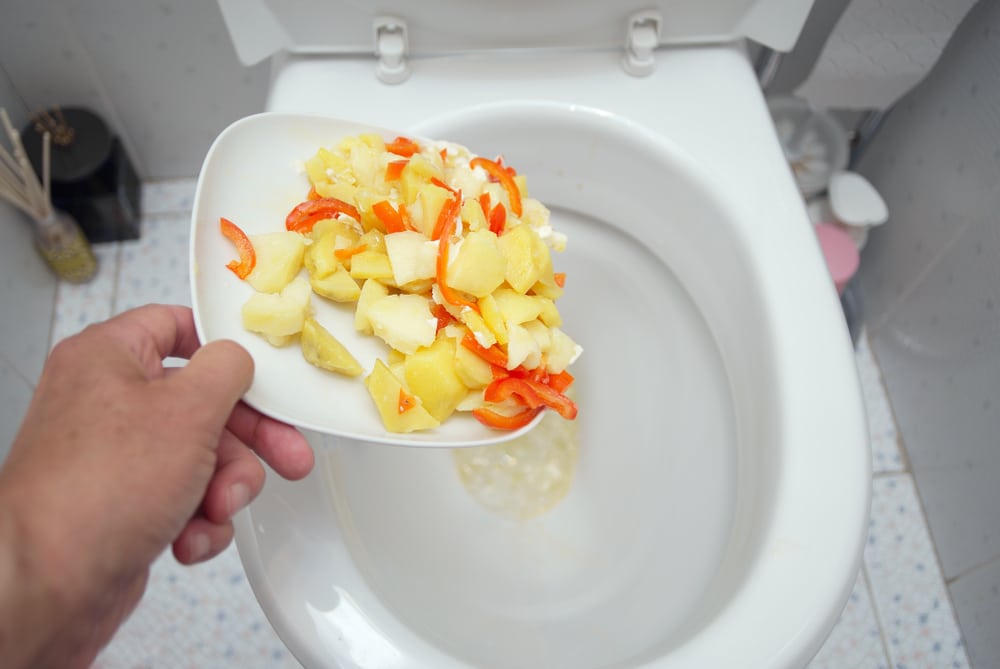Is it Common to Flush Food in the Toilet?
Is it Common to Flush Food in the Toilet?
Blog Article
What are your ideas regarding Is it safe to flush food (especially rice) down the toilet??

Intro
Many people are commonly faced with the problem of what to do with food waste, particularly when it involves leftovers or scraps. One common concern that develops is whether it's all right to flush food down the toilet. In this short article, we'll delve into the reasons that individuals may think about flushing food, the repercussions of doing so, and alternate methods for appropriate disposal.
Reasons why individuals might take into consideration flushing food
Lack of recognition
Some people may not be aware of the prospective injury brought on by purging food down the toilet. They might incorrectly believe that it's a harmless practice.
Benefit
Purging food down the toilet might feel like a quick and simple solution to taking care of undesirable scraps, specifically when there's no nearby trash can offered.
Laziness
In many cases, individuals might simply pick to flush food out of sheer negligence, without taking into consideration the effects of their activities.
Repercussions of flushing food down the bathroom
Environmental effect
Food waste that ends up in waterways can contribute to pollution and harm water environments. Furthermore, the water used to purge food can strain water sources.
Pipes issues
Flushing food can lead to stopped up pipes and drains, causing costly plumbing repair work and aggravations.
Types of food that must not be purged
Fibrous foods
Foods with fibrous structures such as celery or corn husks can obtain entangled in pipelines and trigger obstructions.
Starchy foods
Starchy foods like pasta and rice can absorb water and swell, bring about blockages in pipelines.
Oils and fats
Greasy foods like bacon or food preparation oils need to never ever be purged down the bathroom as they can solidify and create obstructions.
Correct disposal techniques for food waste
Utilizing a waste disposal unit
For homes furnished with garbage disposals, food scraps can be ground up and flushed via the plumbing system. Nonetheless, not all foods are suitable for disposal in this way.
Recycling
Certain food packaging products can be reused, decreasing waste and lessening ecological impact.
Composting
Composting is an environment-friendly means to throw away food waste. Organic products can be composted and utilized to enrich soil for horticulture.
The relevance of correct waste monitoring
Reducing environmental damage
Appropriate waste monitoring techniques, such as composting and recycling, help reduce pollution and maintain natural deposits for future generations.
Protecting pipes systems
By staying clear of the method of flushing food down the toilet, homeowners can protect against expensive plumbing repairs and maintain the integrity of their plumbing systems.
Final thought
To conclude, while it may be alluring to flush food down the commode for ease, it's important to recognize the possible effects of this activity. By adopting proper waste administration methods and taking care of food waste properly, individuals can add to much healthier pipes systems and a cleaner setting for all.
THINK TWICE BEFORE FLUSHING FOOD DOWN YOUR TOILET IN FALLBROOK CA
Let’s be honest, we’re really supposed to be tossing rotten or leftover food in the compost bin or trash can. But many people like to place scraps of food down the drain of, say, their kitchen sink. That’s why the garbage disposal was invented: so we can continue to place certain foods down the drain without clogging our drain in the process. Smart.
But not all of us have the luxury of having a garbage disposal installed. So, you might continue to shove food down your sink drain anyway – or worse: you might flush them down your toilet! If you’re guilty of doing the latter, you’re going to want to stop, and here’s why:
Toilet Drains Aren’t Designed to Handle Food!
There’s your answer: food just doesn’t belong in your toilet. It may seem like your toilet drain is wider than the drains of your sinks, but truth be told, that isn’t actually the case. The narrower pipes of your toilet leave your plumbing at risk for clogging if you do happen to flush your food. In addition, food doesn’t break down as quickly that toilet paper and human waste do. In turn, this leaves your toilet at risk for a nasty clog.
Although a flush of a tiny pinch of food every now and then isn’t going to completely damage your toilet, there are certain foods that should absolutely not be flushed in your toilet at all. These include starchy foods like mashed potatoes, grains, hard pieces of food that are slow to break down, and fats and oils.
The latter categories of food are particularly problematic as they may harden, expand as they absorb water, break down slowly in your system, or generally create the perfect obstruction with their gelatinous composition. These are all things you don’t want in your plumbing system!
Experiencing a Toilet Clog?
Nobody’s perfect, and we all make mistakes. Sometimes one of the mistakes people make is flushing food down their toilet and later realizing that it wasn’t the best thing to do once they see that their toilet is now clogged. Uh-oh!

As a passionate reader on , I was thinking sharing that piece of content was a good thing. If you appreciated our post plz be sure to share it. Thank you so much for taking the time to read it.
Prices & Booking Report this page